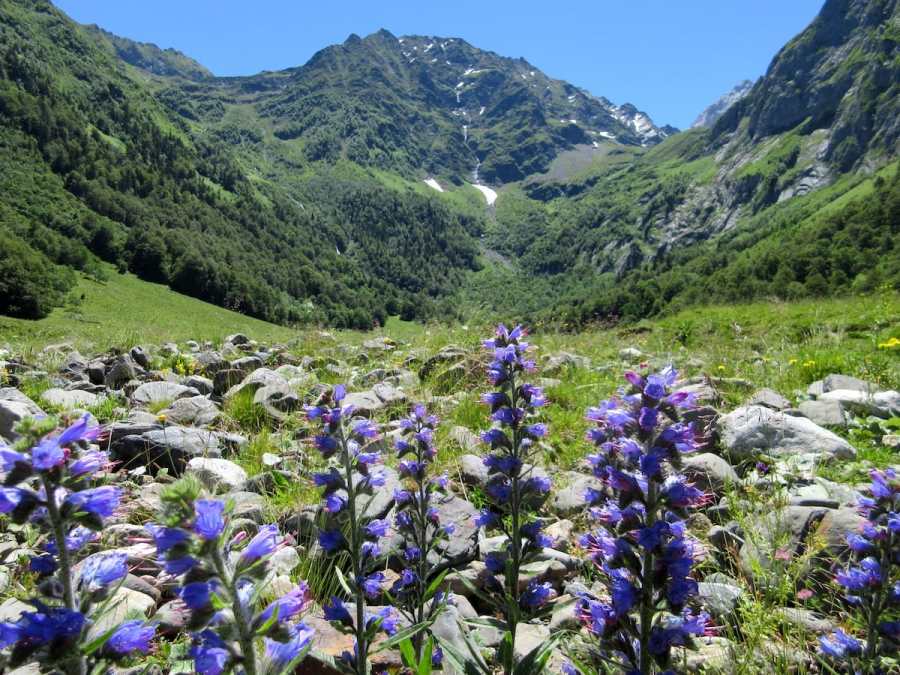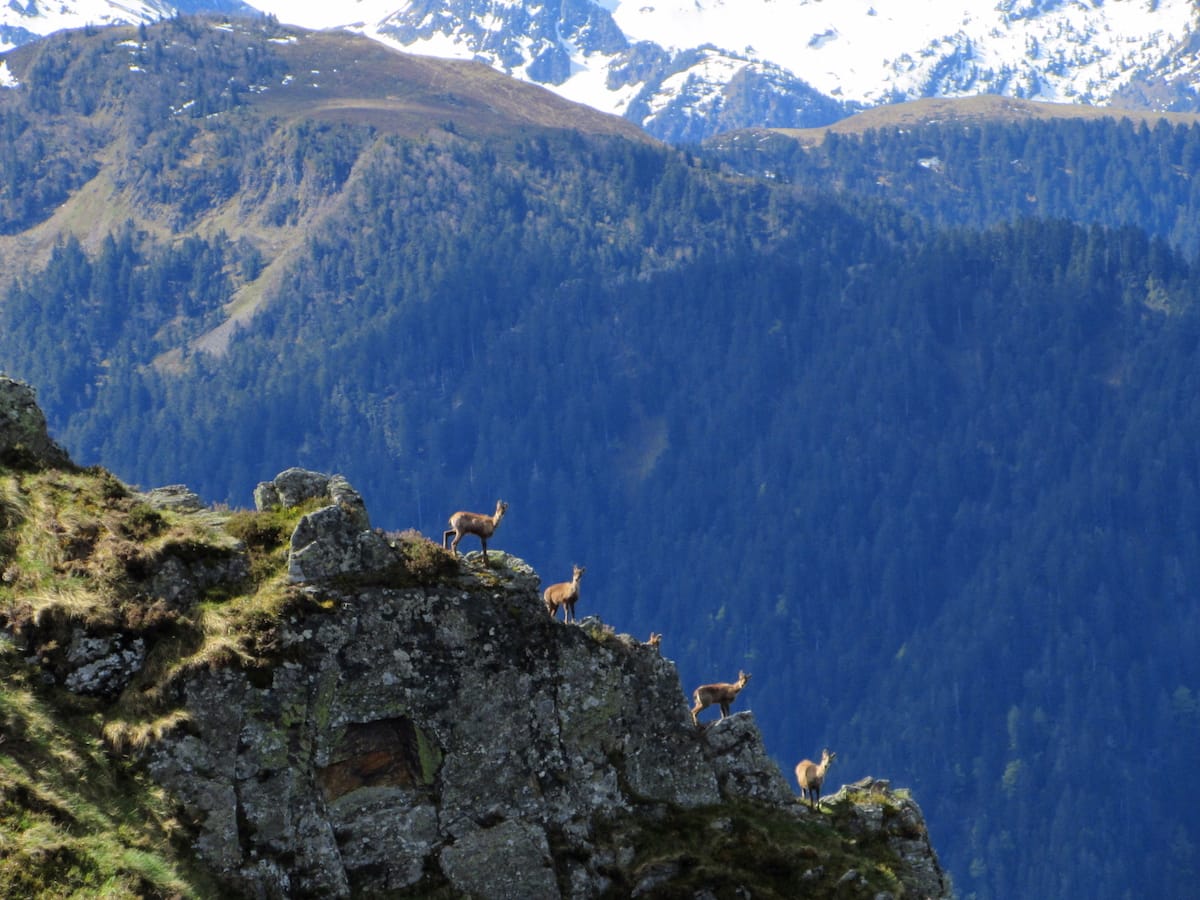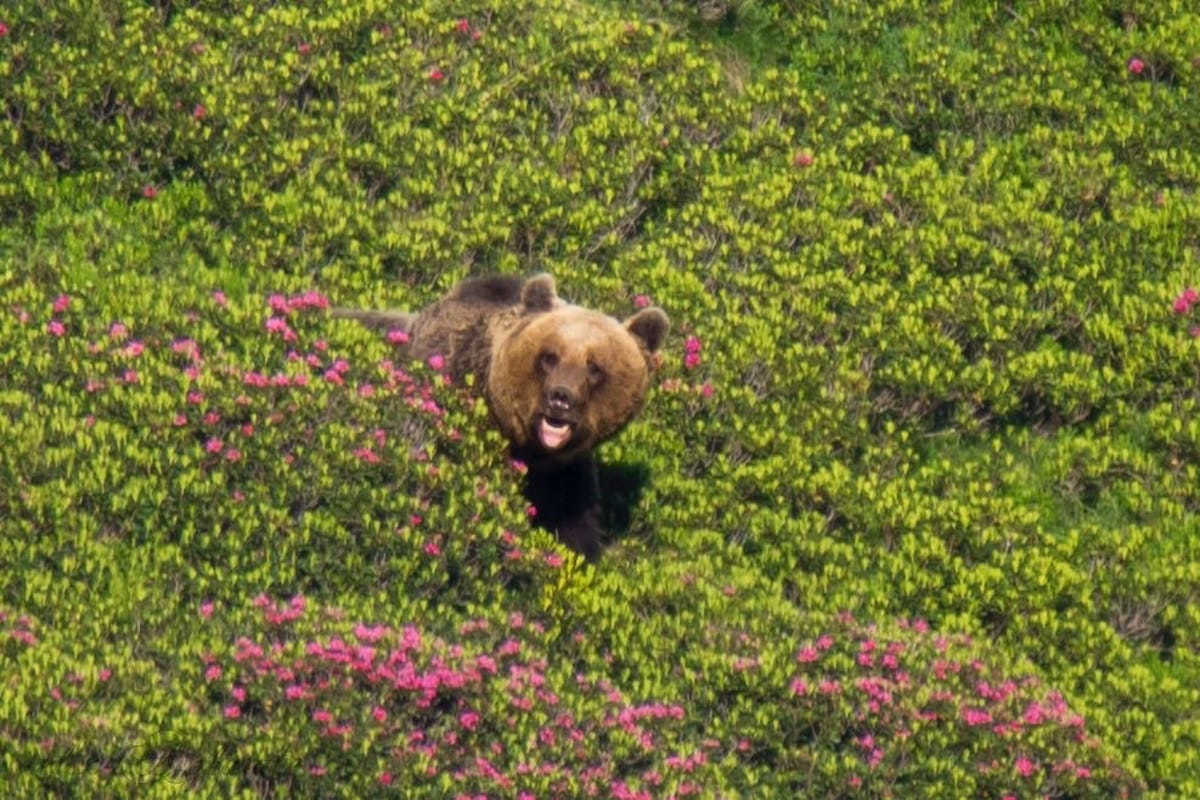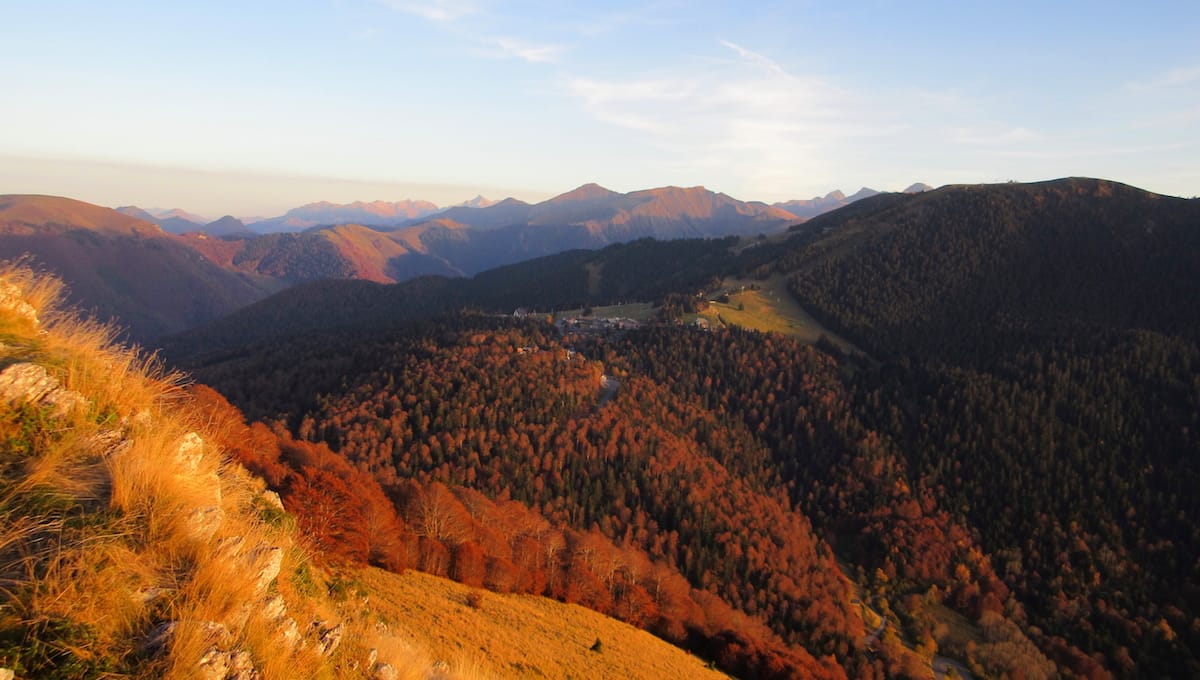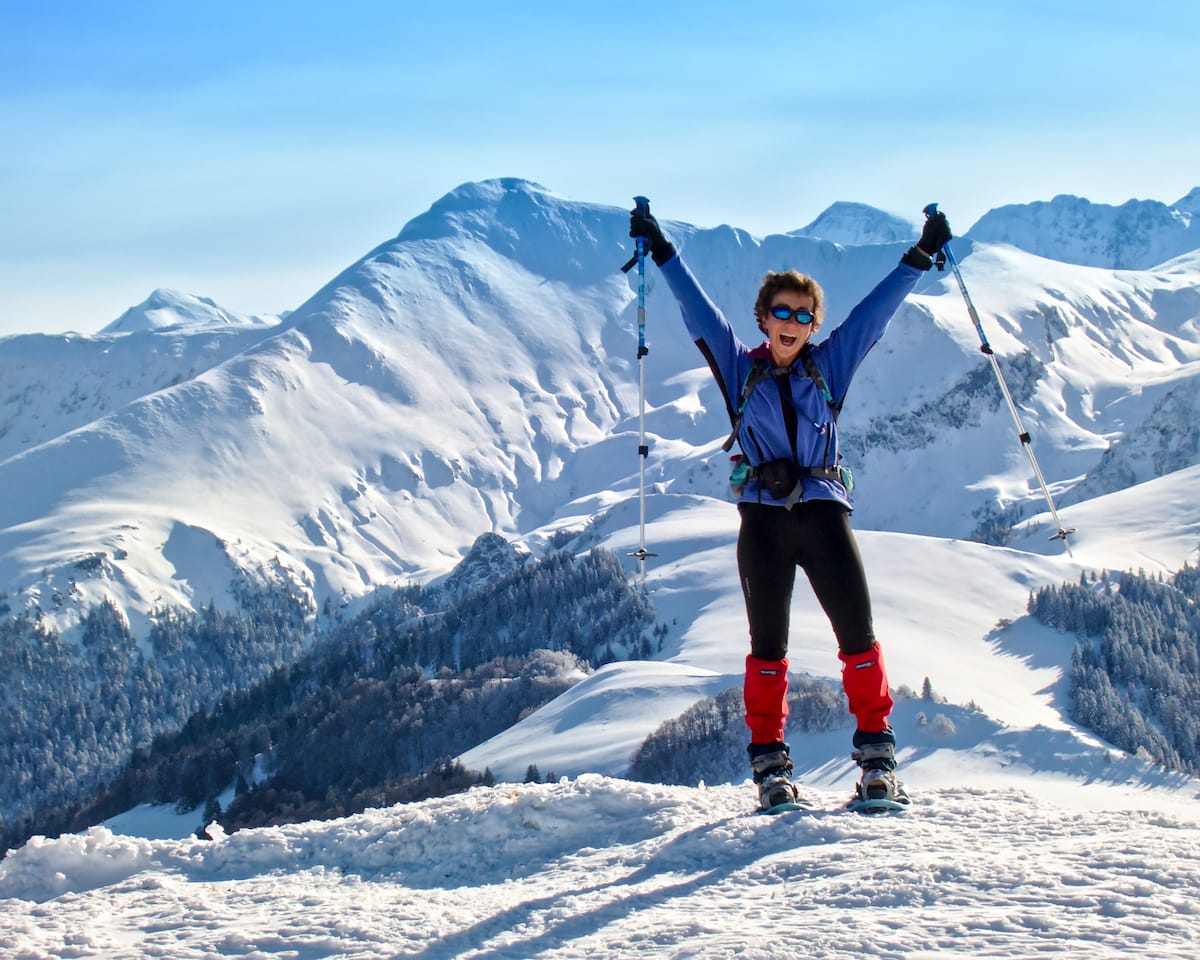Looking for somewhere new to explore? You should consider visiting the Pyrenees
You will no doubt have heard of the Pyrenees, but this 430km-long natural border between France and Spain is more often than not overlooked as a holiday destination in favour of its better-known, bolder, brasher, bigger brother, the Alps.
However these peaks have a captivating spirit and an authenticity lacking in that more frequented mountain range, and they deserve to be better known.
Stretching from the Atlantic Ocean in the west to the Mediterranean in the east, the Pyrenees are also one of the most easily accessible mountain chains in the whole of Europe. Regular flights serve Toulouse, Tarbes/Lourdes and Biarritz airports, all of which are close to the main adventure bases in the centre of the chain such as Bagneres-de-Luchon and Saint Girons. Travel by rail is also quite feasible via the Eurostar.
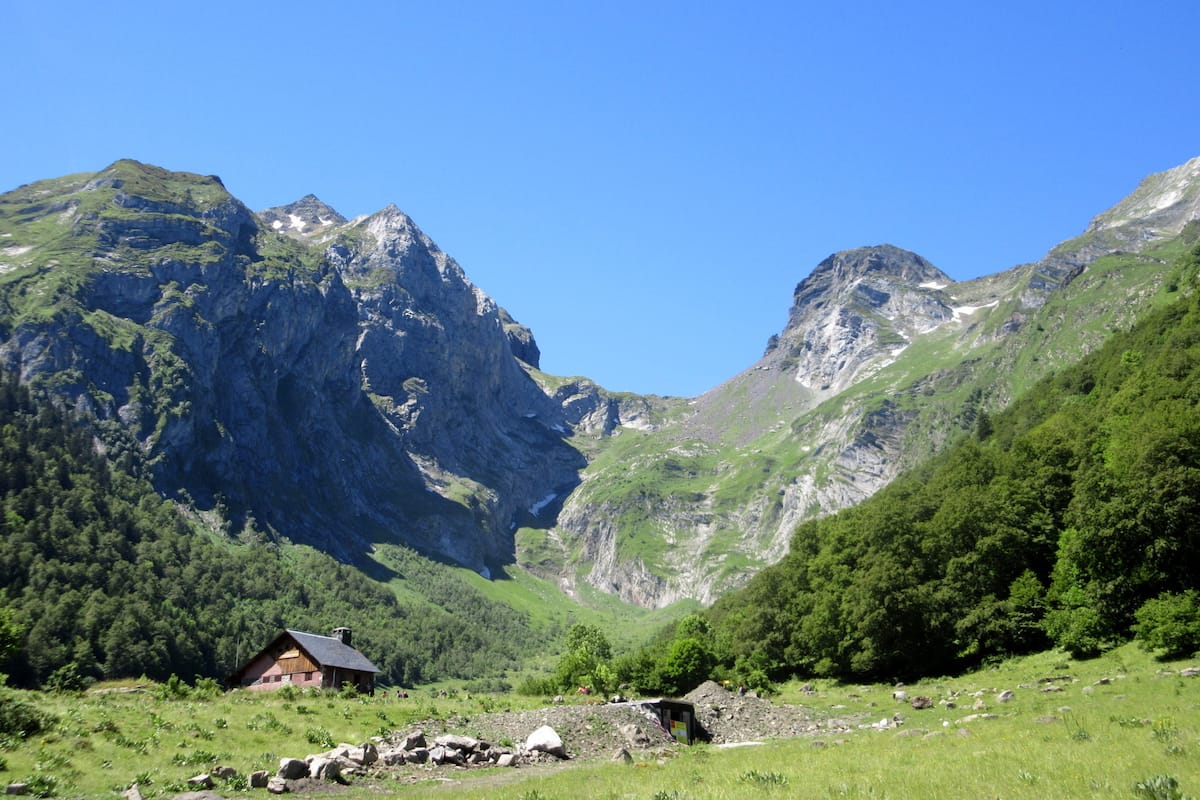
Artiga de Lin
Environment and climate
With 129 peaks that rise to over 3,000m, the Pyrenees are a year-round playground for the outdoors enthusiast, but this range is undeniably the less-crowded alpine jewel of Europe. The mountain environment in the centre of the chain remains blissfully undiscovered.
The climate in the central Pyrenees is a comfortable blend of Atlantic and Mediterranean influences, not as wet and cool as the western reaches but not as dry and hot as the eastern end of the chain.
Cloud inversions are common in the summer months but thanks to the numerous ski resort webcams in the area it’s easy to check out the cloud level and take a decision to head up into the mountains. If conditions are right, you’ll be rewarded with some spectacular photographic opportunities.
In winter, it’s not uncommon for stable high-pressure systems to settle over the Pyrenees and with them those glorious crisp blue-sky days that make you feel glad to be alive.
Hiking
The hiking trails in these parts are world class. They are well signposted, well maintained and even in peak holiday season they are quiet, especially once you have ventured more than a mile from the parking area!
From June to the end of September, the catered mountain refuges are havens for the hiker and other mountain adventurers seeking shelter and refreshment. Up in the high mountains, often with vistas of clear lakes and overlooked by rugged peaks, the refuges are usually only accessible after a few hours of determined hiking. But when that hike takes you past wildflower-strewn hillsides and tumbling waterfalls it really feels like no effort at all.
If you crave solitude then avoid the traditional honeypot destinations such as Gavarnie and also the main waymarked trails such as the long-distance Trans-Pyrenees GR10.
I’d recommend supporting the local economy and calling on one of the experienced local guides or ‘accompagnateurs’ in the central Pyrenees. Many were born and bred in the area and know every inch of their patch. They will delight in guiding you along the lesser-known, unmarked paths, deep into the unfrequented wilds of the mountains where far-reaching and spectacular views await.
Wildlife
Your chances of glimpsing some of the exceptional wildlife of the Pyrenees are also improved in the company of a local expert who knows just where reintroduced animals such as the ibex hang out. These agile, shy creatures favour the out-of-the-way and wilder corners of the Pyrenees, in particular the mountains of the Ariege. Chamois can be seen clinging to the hillsides away from the regular tourist paths.
Look to the skies and you may be lucky enough to spot the lozenge-tailed lammergeier, the rarest vulture in Europe which is now breeding successfully in the central Pyrenees. Look out also for the distinctive Egyptian vulture with its almost white plumage finished off with a trailing wing edge of black feathers. They truly are a magnificent sight as they glide effortlessly overhead.
If you hear a shrill squeak-squeak when out hiking then it could be the marmot sending out its alarm call. However, unlike the animals you may find in the more populated and frequented areas of the Pyrenees, these marmots will not pester you for a morsel of your sarnies – they are altogether wilder creatures.
But it’s the brown bear that has become the emblematic creature of the central Pyrenees. The last of the native Pyrenean brown bears was shot by a hunter in 2006, but thanks to the ongoing reintroduction of brown bears brought down from Slovenia, the population is once again thriving. Over 40 brown bears now inhabit the deciduous forests and mountain slopes from the Ariege department through to the Luchon area and across the border into the Catalunyan Pyrenees.
It’s heartening to hear of local initiatives aimed at educating the general public on the life and behaviour of the brown bear. They include opportunities to hike into the high mountains of the Alt Pirineu National Park and camp in the company of the local bear experts, waking at dawn, grabbing those binoculars and finding locations where the bears have most recently been seen.
When to visit?
Early summer is the best time to experience the full beauty of the Pyrenees. During the last two weeks of June, the displays of mountain wildflowers are spectacular. Hike up above 1,500m and you’ll discover mountainsides carpeted with wild iris, orchids, viper’s bugloss, gentians and many species of wildflower that are endemic to the Pyrenees such as the beautiful yellow Pyrenean lily.
This is also the season when the snowmelt supercharges the rivers to create magnificent waterfalls of crystal-clear water, an exceptional sight and sound in the high mountains. Canyoning, river rafting, kayaking and river boarding come into their own at this time of year.
Hikers should consider heading to the Pyrenees in early autumn. The weather is generally stable with sunny days and a comfortable warmth that may even reach the high 20s. By the end of October the bracken, bilberry bushes and heather have started to take on their autumn colours, making for a stunningly beautiful landscape.
In winter, when fresh snow lies deep on the ground, snowshoes are an essential bit of kit. They work by spreading your weight over a wider area to ease your progress. With a pair of snowshoes strapped to your walking boots you can access some of the most beautiful and unspoilt areas of the Pyrenees.
If you are considering a snowshoe outing in the area we would highly recommend drawing on the knowledge and expertise of the local guides and ‘accompagnateurs’. In winter, safety is paramount and only the locals will know how recent weather has affected snow conditions and where the safest places are to go and play.
Summary
The mountains and foothills of the Pyrenees should be on every outdoor lover’s radar. They are accessible and great value with a tremendous range of year-round outdoor activities on offer. An outdoor adventure in the Pyrenees will leave you captivated and enchanted and you’ll return home wondering why on earth you’d never visited before.
Penny Walker is an outdoor sports enthusiast who has lived in the foothills of the French Pyrenees for over 10 years. Through her business The Adventure Creators she works with local guides and activity specialists creating year-round tailor-made and off-the-shelf adventure holidays for families and individuals in the central Pyrenees.
All images © Penny Walker

